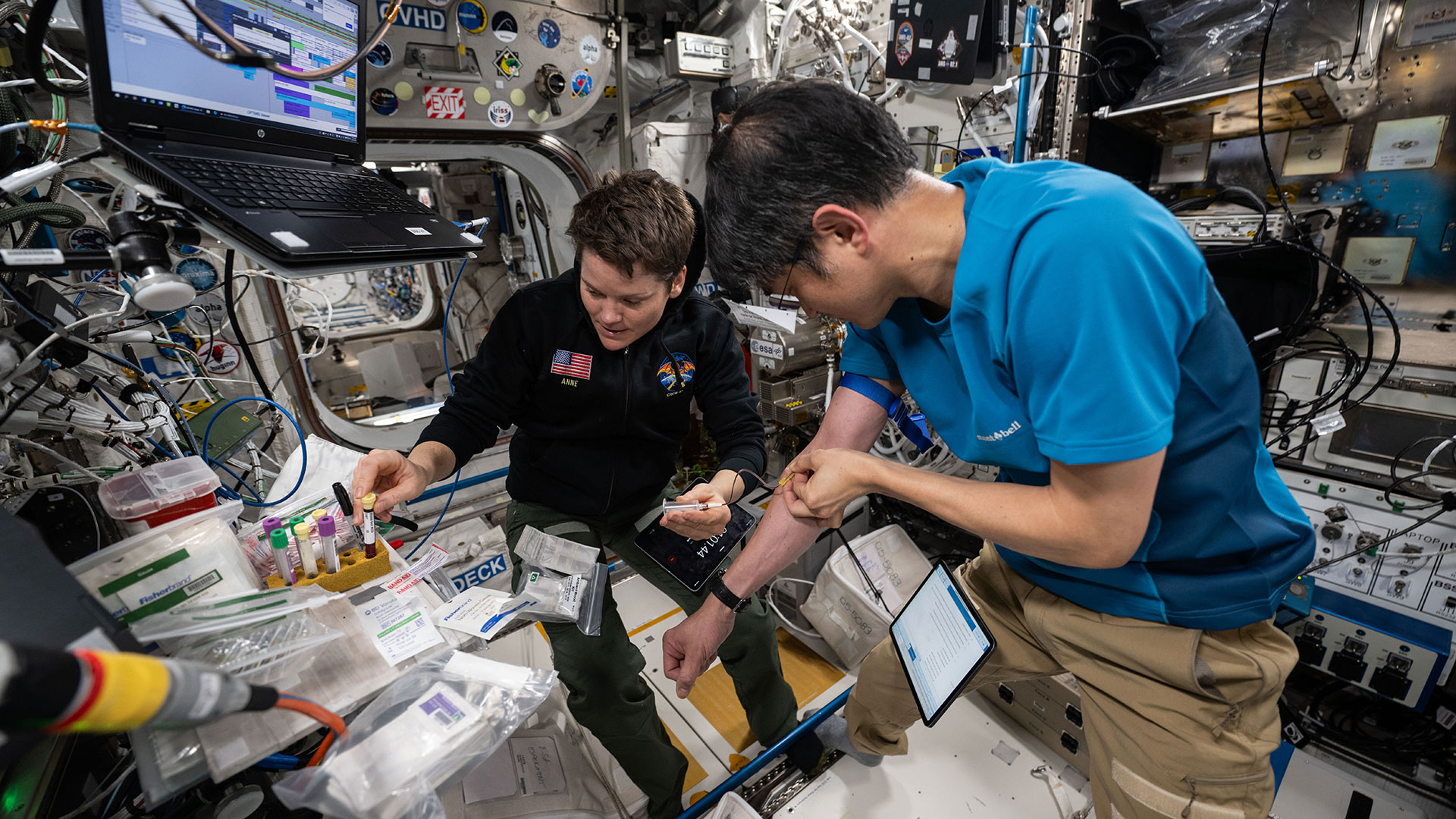Why Are Black Holes So Weird? 'Ask a Spaceman' Explains in New Episode
Why are black holes so hard to study? As astrophysicist and Space.com columnist Paul Sutter explains, it's because black holes represent the intersection of the mathematics of big objects and the mathematics of very small objects — and these two systems of math don't match up.
Sutter explains more about these weird space objects in the most recent installment of his Facebook Watch video series "Ask a Spaceman," produced in partnership with Space.com. And make sure to tune in next week for part two of his look at black holes.
Simply explained, black holes are objects with extreme density. Because black holes have a lot of mass, they have a strong gravitational attraction. That attraction is so strong, in fact, that even light gets trapped when it passes by a black hole. [No Escape: Dive into a Black Hole (Infographic)]
There are different kinds and sizes of black holes. Some are smaller, closer to the mass of stars, and result from the aftermath of a supernova or star explosion, while others are much larger than that and can reach millions or billions of star masses. Scientists are still trying to determine how the largest black holes form. They are also trying to figure out the mathematics in the extreme environments that black holes represent.
"Black holes continue to attract so much theoretical study … [because] this strong gravity acts as a laboratory for new kinds of physics," Sutter says in the episode. In other words, he continues, "black holes are regions where our current knowledge of physics break[s] down."
Black holes are spots where scientists can study two different types of physical theories. One is quantum mechanics, or the science of how subatomic particles behave. The science of quantum mechanics is difficult to explain by logic, because it includes weird phenomena, such as particles interacting with one another at extreme distances.
The other realm of physics that black holes let us explore is called general relativity. Again, the physics here is complicated, but you can think of general relativity as the science of the very big, Sutter explains. One aspect is interpreting how gravity behaves; according to Albert Einstein, massive objects distort space-time. A large body in space, like a star, pulls other bodies toward it, for example. To think of it more simply, as an analogy, a bowling bowl on a trampoline would dimple the trampoline. Then, any marbles rolled nearby would fall into the dimple.
Get the Space.com Newsletter
Breaking space news, the latest updates on rocket launches, skywatching events and more!
Although black holes are very powerful, Sutter says that they may eventually die — just like many other things in the universe. He cites the theory of Hawking radiation, or the mathematics that describes how black holes glow and fade over time, as one of the pieces of evidence for their ultimate demise. For more information, you can read a past Space.com column by Sutter here.
The episodes will be released weekly on Wednesdays at 12 p.m. EDT (1600 GMT), so "like" the "Ask a Spaceman" Facebook page or check back later to see more. Sutter responds to reader questions in every episode. Also check out that page to learn more about past topics the show covered, such as the Big Bang and Pluto.
Sutter is a cosmologist at The Ohio State University and chief scientist at the Center of Science and Industry in Columbus, Ohio. He has a long-running podcast, also called "Ask a Spaceman." You can catch all past episodes here.
Follow us @Spacedotcom, Facebook and Google+. Original article on Space.com .
Join our Space Forums to keep talking space on the latest missions, night sky and more! And if you have a news tip, correction or comment, let us know at: community@space.com.

Elizabeth Howell (she/her), Ph.D., was a staff writer in the spaceflight channel between 2022 and 2024 specializing in Canadian space news. She was contributing writer for Space.com for 10 years from 2012 to 2024. Elizabeth's reporting includes multiple exclusives with the White House, leading world coverage about a lost-and-found space tomato on the International Space Station, witnessing five human spaceflight launches on two continents, flying parabolic, working inside a spacesuit, and participating in a simulated Mars mission. Her latest book, "Why Am I Taller?" (ECW Press, 2022) is co-written with astronaut Dave Williams.
